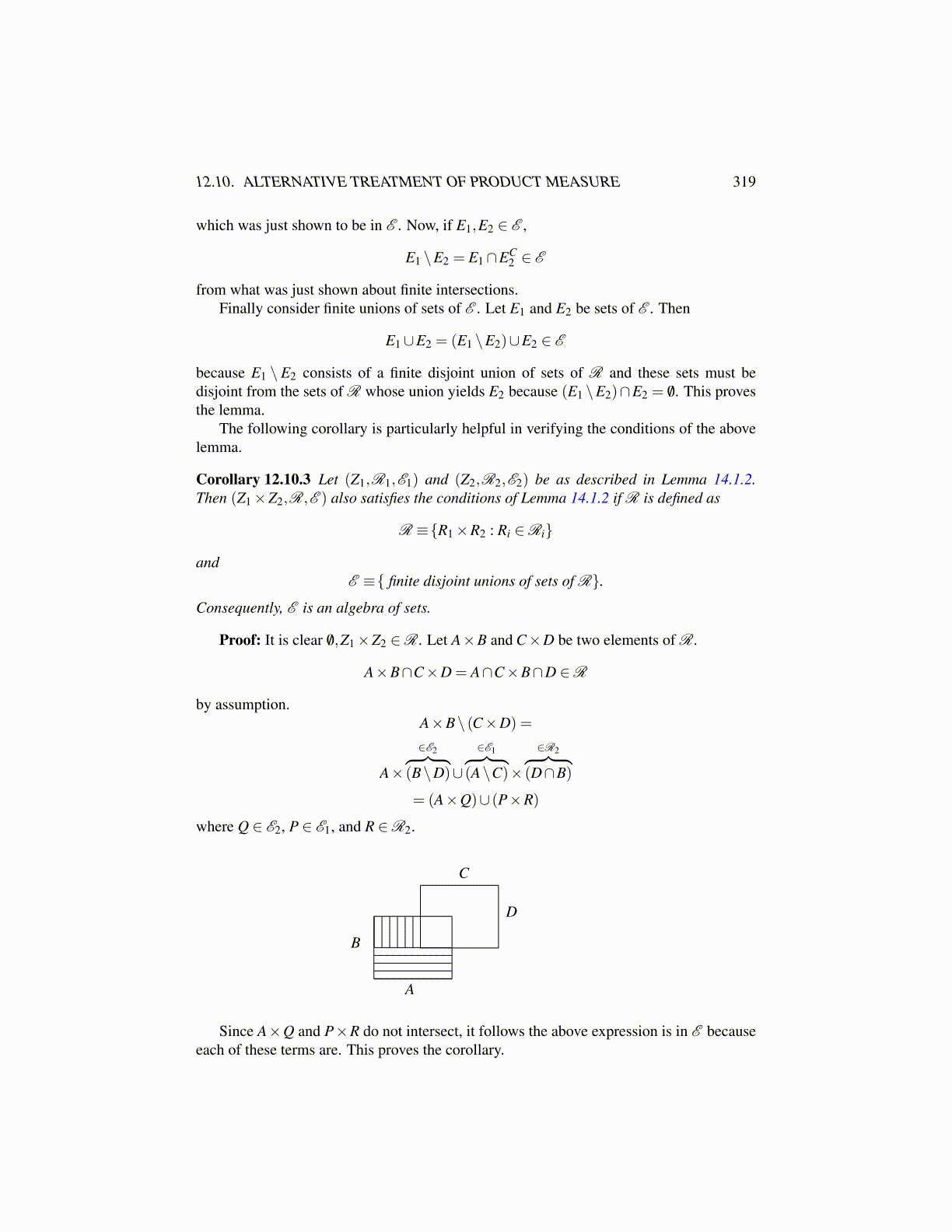
12.10. ALTERNATIVE TREATMENT OF PRODUCT MEASURE 319
which was just shown to be in E . Now, if E1,E2 ∈ E ,
E1 \E2 = E1∩EC2 ∈ E
from what was just shown about finite intersections.Finally consider finite unions of sets of E . Let E1 and E2 be sets of E . Then
E1∪E2 = (E1 \E2)∪E2 ∈ E
because E1 \ E2 consists of a finite disjoint union of sets of R and these sets must bedisjoint from the sets of R whose union yields E2 because (E1 \E2)∩E2 = /0. This provesthe lemma.
The following corollary is particularly helpful in verifying the conditions of the abovelemma.
Corollary 12.10.3 Let (Z1,R1,E1) and (Z2,R2,E2) be as described in Lemma 14.1.2.Then (Z1×Z2,R,E ) also satisfies the conditions of Lemma 14.1.2 if R is defined as
R ≡{R1×R2 : Ri ∈Ri}
andE ≡{ finite disjoint unions of sets of R}.
Consequently, E is an algebra of sets.
Proof: It is clear /0,Z1×Z2 ∈R. Let A×B and C×D be two elements of R.
A×B∩C×D = A∩C×B∩D ∈R
by assumption.A×B\ (C×D) =
A×
∈E2︷ ︸︸ ︷(B\D)∪
∈E1︷ ︸︸ ︷(A\C)×
∈R2︷ ︸︸ ︷(D∩B)
= (A×Q)∪ (P×R)
where Q ∈ E2, P ∈ E1, and R ∈R2.
A
B
C
D
Since A×Q and P×R do not intersect, it follows the above expression is in E becauseeach of these terms are. This proves the corollary.